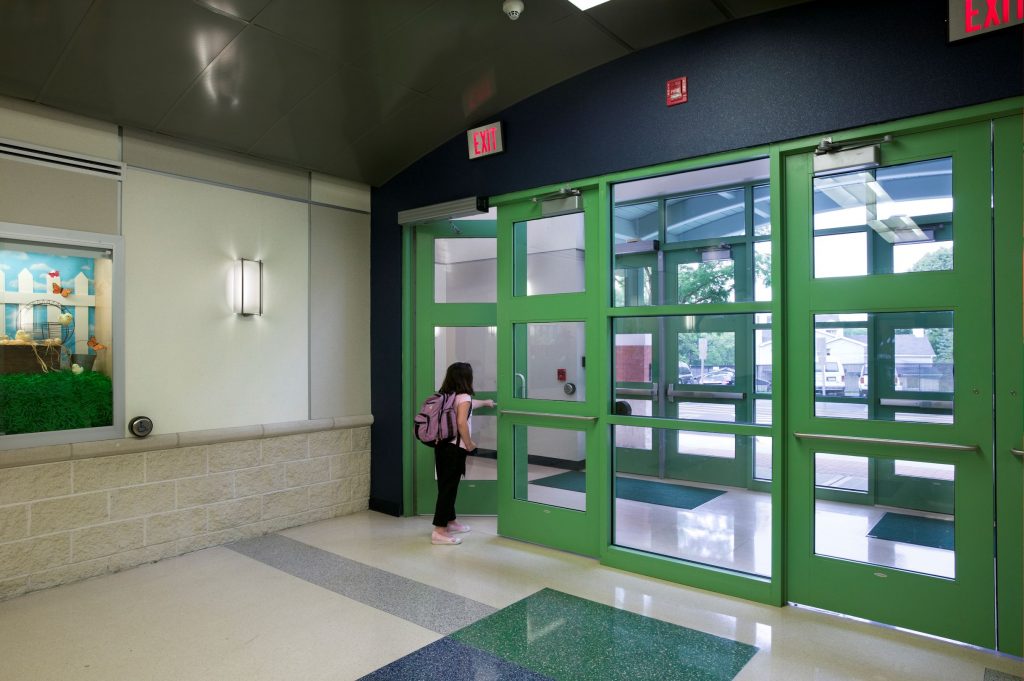 This section of the ShortCodes course will cover the code requirements related to life safety and egress. Egress is the action of going out or leaving a place, and the means of egress describes the route that a building occupant travels along the exit access and the exit, to the exit discharge.
This section of the ShortCodes course will cover the code requirements related to life safety and egress. Egress is the action of going out or leaving a place, and the means of egress describes the route that a building occupant travels along the exit access and the exit, to the exit discharge.
In most buildings, the doors within the means of egress must allow building occupants to exit freely; people can not be locked inside of a room or building except in locations specifically allowed by code. One example of this would be certain types of units within health care occupancies, where patients require containment for their safety or security. In these areas, such as memory-care facilities, doors are allowed to prevent egress until emergency evacuation is needed. This application has become known as “controlled egress.”
Most of the egress requirements are found in Chapter 10 of the International Building Code (IBC) and the International Fire Code (IFC), and in Chapter 7 of NFPA 101 – The Life Safety Code. The video below is an introduction to the egress requirements for door openings. Most of the concepts addressed in the introductory video are covered in more detail in other segments of the ShortCodes course.
After watching the video, proceed to the review questions below.
~~~
Review Questions
1. Which doors in a means of egress are required to swing in the direction of egress?
- All egress doors must swing in the direction of egress.
- Doors serving a calculated occupant load of 10 people or more
- Doors serving a calculated occupant load of 50 people or more
- Doors serving a calculated occupant load of 100 people or more
2. While most doors on an accessible route must open with no more than 5 pounds of force, the model code requirements of 30 pounds to set the door in motion and 15 pounds to open the door to the fully-open position apply to which doors?
- Manually-operated exterior doors and fire doors
- Non-fire-rated swinging doors
- Power-operated pedestrian doors
- All egress doors
3. Which doors in a means of egress are NOT required to be unlatched with one releasing motion?
- Auditorium doors
- Conference room doors
- Electrical room doors
- Dwelling unit entry doors
Answers: 1 – C, 2 – A, 3 – D
